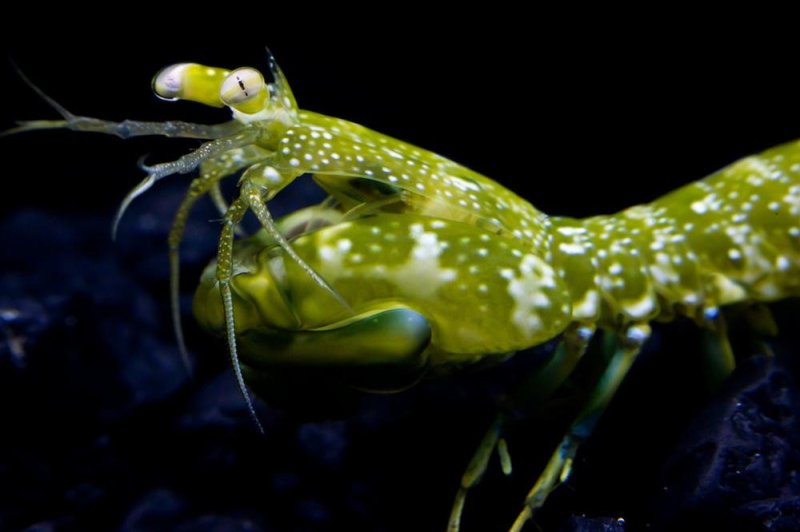A green mantis shrimp. (Michael Bok)
WASHINGTON, July 7 (UPI) -- The colorful lobster-like crustacean known as the the mantis shrimp can crack aquarium glass with claws capable of striking with the force of .22 caliber bullet. But maybe more impressive than its weaponry is its eyesight.
The mantis shrimp can see ultraviolet light, which has wavelengths too short for humans and most other animals to pick up. Mantis shrimp can also pick out the orientation, or polarization, of light waves -- the manner in which a light wave oscillates as it travels.
Scientists have known all this. But a new study, published last week in the journal Current Biology, helps explain how the shrimp does it.
First, the mantis shrimp is rolling in color receptors. Whereas humans pick out the world's colorful bounty with just three color receptors, the mantis shrimp has 12. Half of these receptors help the shrimp differentiate between five wavelengths of UV light.
Secondly -- and maybe most significantly -- the mantis shrimp uses optical filters made of various mycosporine-like amino acids, or MMAs. Called nature's sunscreen, MMAs are mostly excreted by animals to protect themselves from the sun's damaging UV rays.
But the mantis shrimp uses the substance to more effectively filter through the different types of light entering its cones. These MMA filters are layered, and the shrimp can pair a different filter with different combinations of color receptors to pick out different colors.
"The overall construction of the mantis shrimp's visual system is just so unbelievably ridiculous, so this is just another piece of that tapestry," explained Michael Bok, a doctoral candidate at the University of Maryland, Baltimore County, and one of the study's lead researchers.
What's perhaps most interesting, scientists say, is that the shrimp's ability to differentiate between various colors is basically on par with that of a human's eyes -- but the shrimp's UV-specific eyes can filter out colors faster and using a much, much smaller brain.
But why?
"What you can say is that it didn't just happen by chance -- natural selection led to the evolution of this system," said Daniel Osorio, a neuroscientist at the University of Sussex, who didn't participate in this latest study.
Bok and his colleagues are currently doing field research along the Great Barrier Reef to better understand why the shrimp employ such a unusual visual system. Although Bok predicts their strange eyes could help them communicate, hunt prey or avoid predators, he said only further research can allow scientists to know for sure.















